Throughout the life cycle of a product or service, business decision makers may benefit from thorough and insightful research, which in turn may positively impact the bottom line. Various types of research and research methods are available depending on the strategic objectives and product lifecycle stage. Here are a few examples of the types of research that may be useful at different points in the life cycle of a product or service.
During the product development stage, quantitative research may be used to evaluate how well a product concept is perceived by the targeted market and how it might be configured with regard to features. Conjoint analysis is an approach that is commonly used for this purpose. Conjoint analysis facilitates measuring the importance of features and simulating different combinations in order to select an optimal feature mix.
Early on after product introduction, customer experience research may prove useful to assess the customer purchase experience. In-depth interviews may be utilized for such purpose. One-on-one in-depth interviews (IDI’s) or focus groups may be conducted with a small set of customers to understand their individual experiences in specific areas or steps during the purchase decision making process. Customers may be asked to share their motivations behind the purchase, compare the specific product to other alternatives, evaluate how this product performs against expectations and identify areas that may require improvements.
Customer segmentation research may be useful to tailor marketing communications and target sales efforts for new and mature products or services. Once segments are identified, a detailed profile of each segment as well as a prospecting model may be developed based on the needs and behaviors of customer segments to assist marketing/selling strategies. Potential linkage to other internal databases may be established as well to further incorporate the research findings into business decisions.
For a mature product or service, research may also provide great value in understanding customer churn. One approach is a quantitative tracking study. Telephone interviews or on-line surveys may be conducted with customers disconnecting a specific service to better understand the churn rationale, migration patterns, key competitors and potential retention and win back opportunities. Conducting such quantitative research at certain time intervals may provide the ability to track the results over time and determine the effectiveness of churn retention efforts implemented.
Various research tools are available to provide assistance to make the most sound business decisions at different stages of a product’s life cycle. Research professionals will be able to provide options and recommendations to select the appropriate approach.


